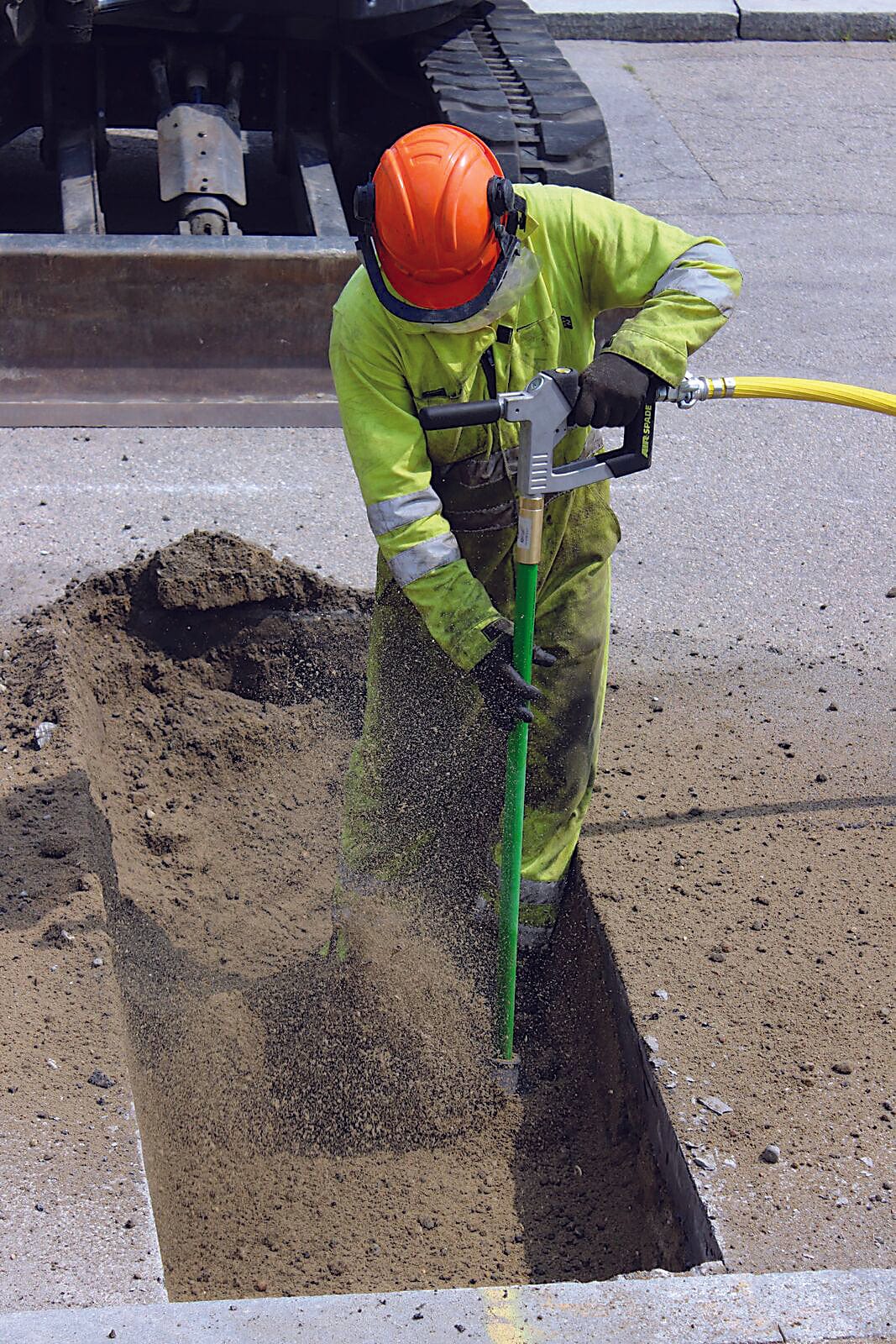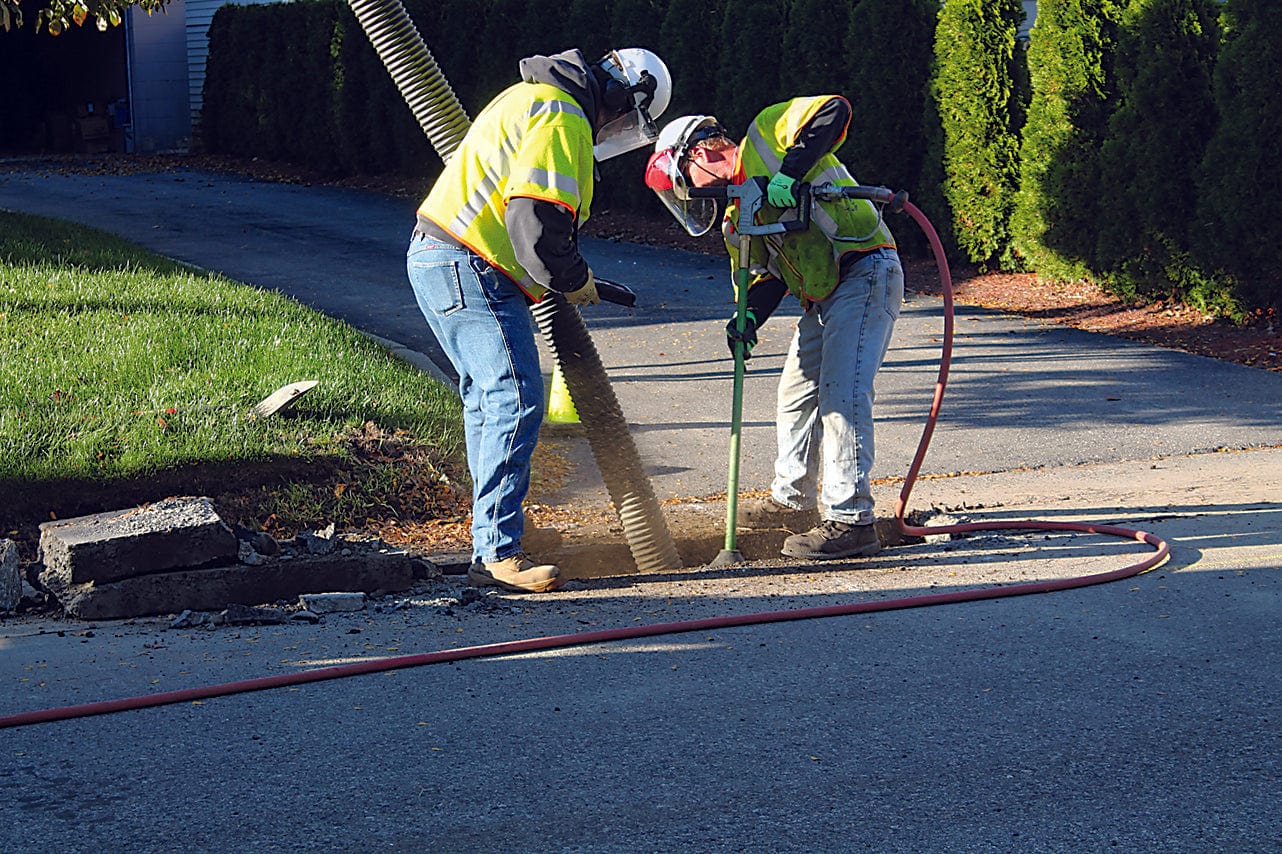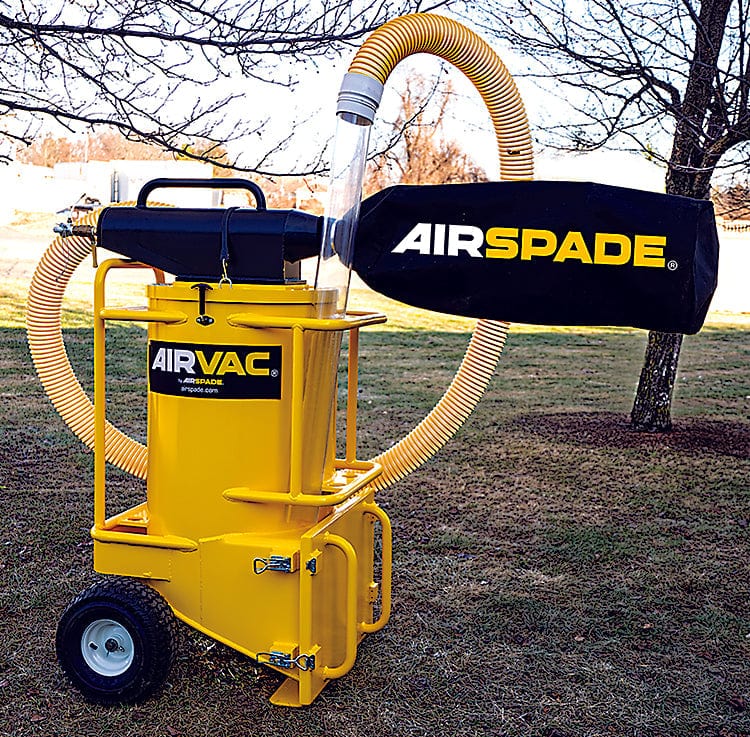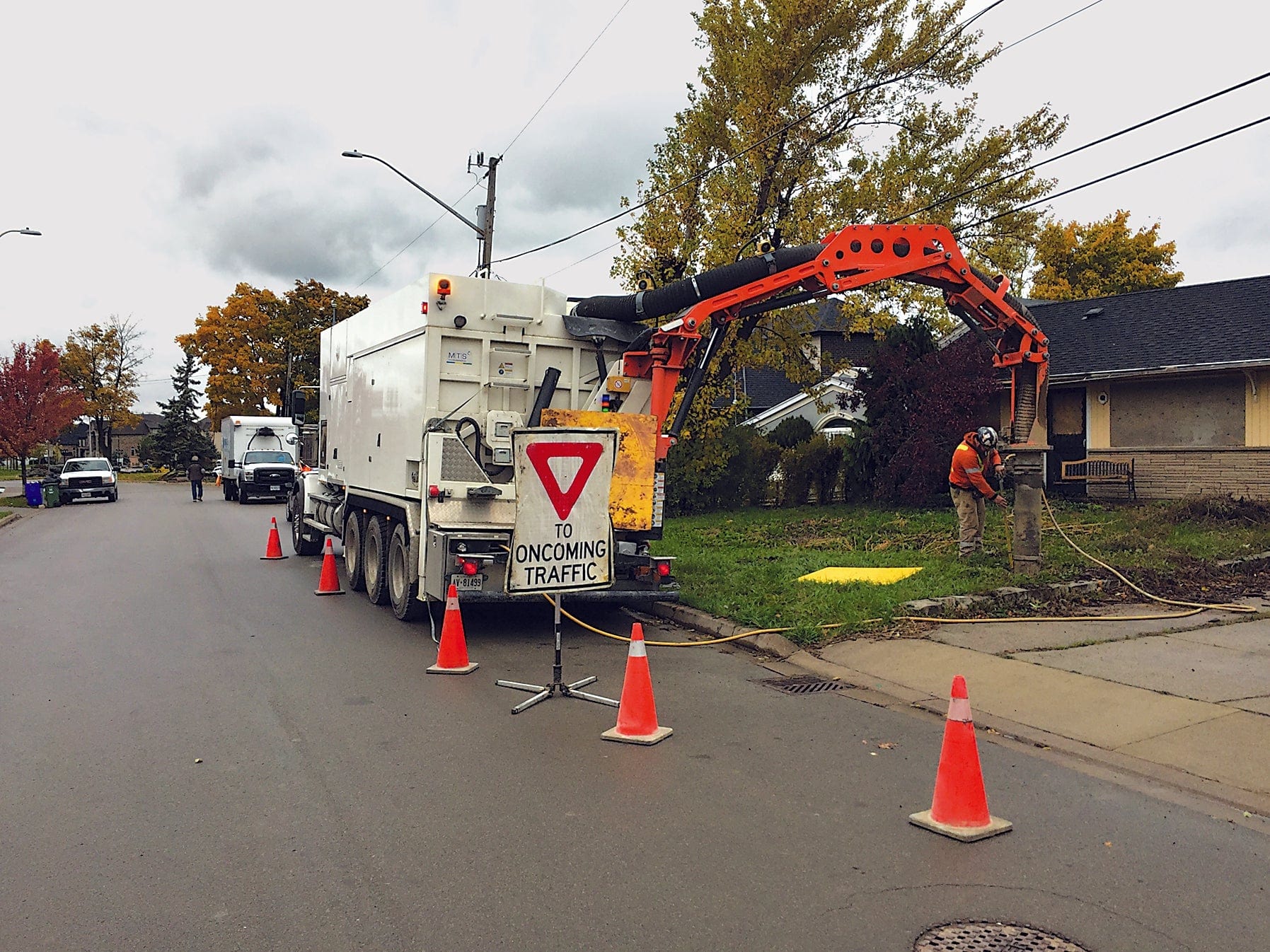
High-powered, mobile vacuum units are essential pieces of equipment for safely locating and uncovering underground utilities. Their effectiveness is greatly enhanced when operating in tandem with either compressed air, or high-pressure water – techniques known as Dry Excavation and Hydro Excavation.
In dry excavation, high-pressure compressed air delivered by a nearby air compressor, is directed at the work surface using a Utility AirSpade or equivalent tool. The compressed air agitates and loosens the soil, partially propelling it airborne. A vacuum system then sucks up the soil into a tank, where the soil is stored to be reused or transported offsite.
Hydro excavation works in a similar manner. High-pressure water, delivered by an onboard pump, is directed at the work surface where it cuts through the soil, creating a slurry. The vacuum system then sucks up the slurry into a tank where the soil is stored to be reused or transported offsite.
DRY AND HYDRO EXCAVATION APPLICATIONS
Both dry and hydro excavation have become standard operating practice for a wide array of applications including utility locating, keyholing, potholing, installing light poles, valve box cleaning, repairing water main breaks, cutting trenches for buried cable, fiber optic repair, cathodic protection for gas and water lines, and even window well installation
Before deciding between these two techniques, understanding the underlying soil conditions is essential for selecting the proper equipment. Other factors include travel distance to the disposal site, State and local weight restrictions, excavation distance from the unit, job site requirements, and availability of water. Estimating the size of the job (volume of spoils) is also critical so that the correct-sized debris body (tank) can be employed to complete the work as efficiently as possible.
DRY EXCAVATION – ADVANTAGES
Dry excavation tends to be the preferred methodology where soils are not as compact, where water is not readily available, or where immediate backfill of the hole is required. In smaller-scale excavation projects, or when working around brittle underground utilities, this method is often preferred due to lower operating pressures.

Dry excavation allows for backfilling the hole with the same, dry excavated spoils. This eliminates the need to store and dispose a wet/muddy slurry of material generated by hydro excavation. Dry spoils can also be off-loaded on site as necessary. Backfilling excavated spoils eliminates the need to travel and pay for a dump site.
Another advantage is that limitless quantities of compressed air can be generated on demand. Onboard compressors generate compressed air as required vs. the need to refill a water tank. Finally, when working around high voltage lines, dry excavation is more often the preferred choice since air is nonconductive.
HYDRO EXCAVATION – ADVANTAGES

Hydro excavation tends to be most effective with more compact soils including frozen surfaces. Onboard water heaters warm the water which aids in cutting through the soil. Water also acts as a lubricant and helps to prolong the life of vacuum equipment by reducing wear on vacuum hoses and other components in the air stream. Hydro excavation is especially useful for tank, pit, or general cleaning and does not produce the sandblasting effect common to dry excavation.
As a rule, when speed of excavation is the most important factor, hydro excavation is generally the methodology of choice.
VACUUM UNITS – A RANGE OF OPTIONS
 AirSpade Vac manufactured by Guardair
AirSpade Vac manufactured by Guardair
Vacuum units are typically large, expensive, truck-mounted systems with the capacity to hold between 1,000 and 2,000 gallons of spoil. At the other end of the spectrum, small, cost-effective units such as the 82-gallon capacity AirSpade Vac, provide a high degree of mobility and are suited for smaller jobs. Maneuverability and small size provide an advantage on crowded job sites and where sensitive terrain might suffer damage from heavy, truckmounted units.
 Full Size Vacuum Truck
Full Size Vacuum Truck
Vacuum trucks feature on-board compressed air or hydro packages that can be purchased as options. Choosing a vacuum truck featuring both capabilities significantly increases versatility and permits the contractor to deal with myriad conditions. Some utilities and State Departments of Transportation are beginning to require dry excavation for certain applications, for example where backfilling is required for Subsurface Utility Engineering (SUE) projects. On the other hand, the speed of hydro excavation is too significant to overlook for general potholing, which is why utility contractors often favor a machine with both capabilities.
OTHER CONSIDERATIONS
Contractors should choose a vacuum system to meet specific applications and achieve maximum job productivity. Options include cold weather packages with water heaters to cut through frozen ground, dual operator stations, hydraulic tool packages, off-loading and dumping capabilities, and auxiliary tool boxes. An on-board air compressor can provide a variety of uses such as powering pneumatic tools. An on-board water tank to provide fresh water at a job site, or the ability to tow an auxiliary trailer, may be other important features.
To learn more about the use of compressed air-powered excavation for utility/construction work, see the full Utility Technical Applications Bulletin.
